This was published 3 years ago
The most spacious seats on planes flying internationally from Australia: The best seats to choose for social distancing
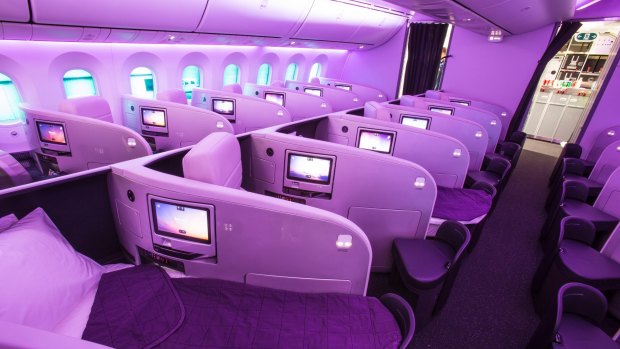
The 1-1-1 configuration in business class on Air New Zealand's Boeing 787-9 Dreamliner.Credit: Bret Hartman
Does the thought of getting back into an aircraft make you nervous? Confined spaces, close contact with fellow travellers coming from who knows where, and what about those HEPA filters that purify the air you breathe in the aircraft cabin, are they really going to filter out a virus with a diameter of about 120 nanometres? That's 50 times smaller than a human red blood cell.
You might also be looking to maintain social distancing, but how do we do that? Because from the airlines' viewpoint, social distancing onboard is not going to happen. When the threat of coronavirus recedes, none of the international airlines currently servicing Australian airports are going to be blocking off the middle seat in economy class. For the time being it's a moot point. So low are the loadings for aircraft flying into and out of Australia that having a spare seat beside you, and often one on either side, is standard for economy flyers. That will probably change when we're allowed to travel freely on international flights, and the old familiar sardine-can crush will again become the norm.
So where to sit? Within economy class, the widest seat on board any airline gives you about 2.5cm more separation from your neighbour than the narrowest seat. That's not going to make any difference to your chances if the passenger next to you is infected with COVID-19. If you want to practice social distancing while flying economy, it doesn't matter which airline you fly with.
For those seated in the economy cabin the optimal strategy is to limit interaction with other passengers. A 2018 study by Atlanta's Emory University found that passengers sitting in window seats typically have less close contact with other passengers. Avoid seats close to toilets and galleys, two high traffic areas where people linger. Seats further to the rear also mean close contact with fewer passengers.
While the degree of separation in economy class seats varies little from one airline to another, there is a much greater difference between business class seating. The holy grail for travellers wanting to practise social distancing in business class is the 1-2-1 seating configuration in a reverse-herringbone pattern, with the window seats angled outwards and central seats angled inwards. Some airlines go one better with closing doors that make their business seats into a mini-suite, offering yet another layer of protection. Sitting beside a partner or a family member is not going to matter but for solo travellers, those single window seats are ideal.
Based on SeatGuru's seat maps, here's a rundown of the social distancing you can expect in premier classes among international airlines currently flying to Australia.
Air New Zealand
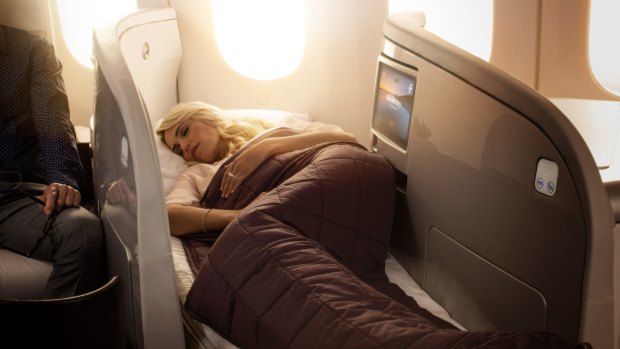
The airline's 787-9 Dreamliner is a premium choice for social-distancing passengers looking to fly business class with a 1-1-1 configuration and an aisle separating each seat. Seating in premium economy is 2-3-2 in each row.
Cathay Pacific
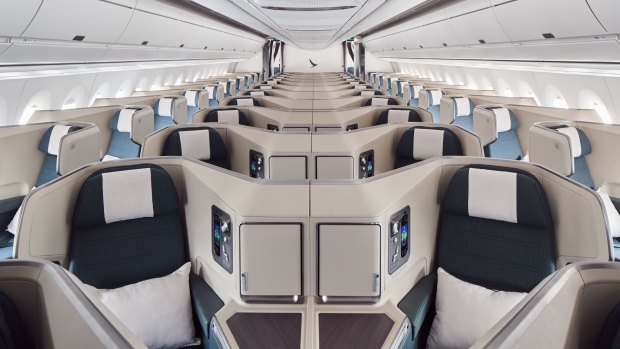
The Hong Kong carrier's A350-1000 has a huge business class cabin with 46 seats in a reverse-herringbone pattern. Aboard the carrier's A350-900, also servicing Australia, the pattern is the same for business class seats.
China Eastern Airlines
Business seating on the airlines Airbus A350-900 is 1-2-1 across, all forward facing, with sliding doors for added privacy. A pop-up screen is available to isolate passengers in central seats.
Emirates
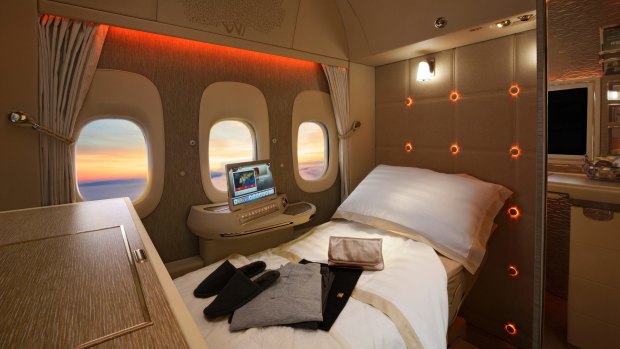
Emirates' first class suites on the Boeing 777.
The Dubai-based carrier is one of the few airlines offering a first-class cabin, and the closed private suites on Emirates' Boeing 777-300ER aircraft are the way to go for anyone looking for the ultimate in social distancing. In business class on the same aircraft you can expect 2-3-2 seating. Business class seats on Emirates A380 aircraft are set 1-2-1 in each row, but the airline is not currently operating this aircraft type on flights to Australia.
Etihad
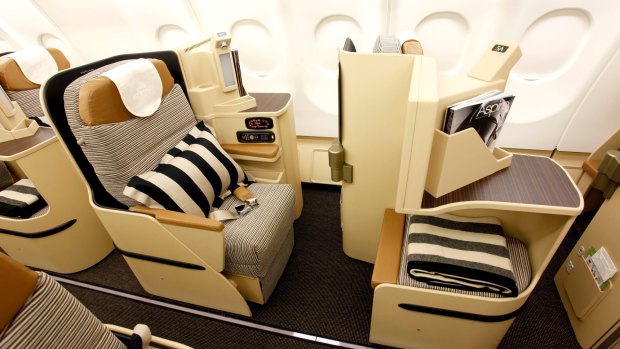
The Abu Dhabi carrier offers closed suites for its first-class flyers aboard its Boeing 777-300ER aircraft. Business class seating is 1-2-1 per row. Window seats face forward, with the middle pairs facing inward and outward in alternate rows.
Fiji Airways
Business class seats aboard the airline's A350-900 are arranged in a 1-2-1 reverse-herringbone configuration.
Garuda Indonesia
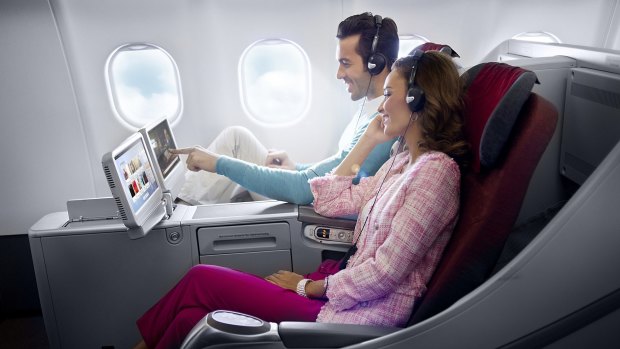
The A330-300 that the airline operates to Australia is either a 2-2-2 setup with all forward-facing pairs or a more expansive 1-2-1 reverse-herringbone configuration.
Japan Airlines
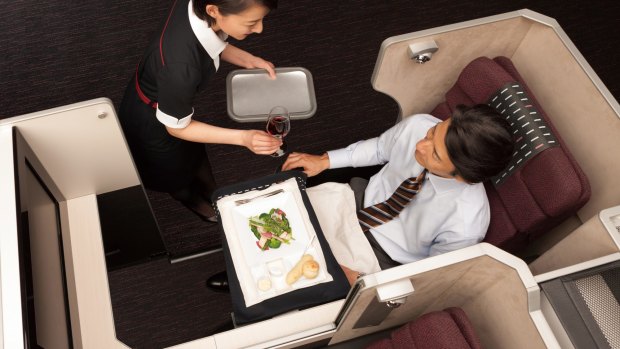
Credit: Lightpublicity
Business-class seating aboard JAL's 787-8 Dreamliners is a 2-2-2 configuration, all parallel. Aboard JAL's 787-9 aircraft, seating in business class is also 2-2-2 in one version and a reverse-herrringbone1-2-1 configuration in the other two versions.
Singapore Airlines
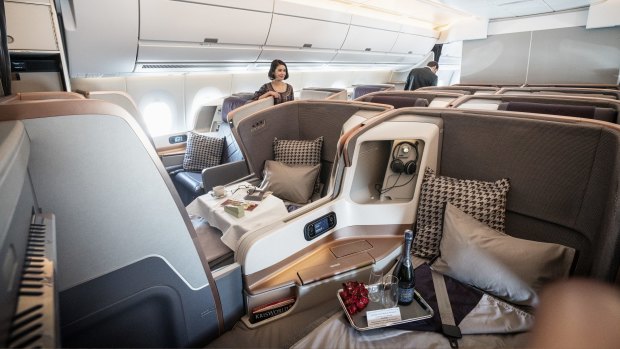
Credit: Bloomberg
Aboard the Airbus 350-900 that Singapore Airlines is currently using for its flights between Australia and Singapore the configuration in business is 1-2-1, all forward facing, with a width of 71cm, which makes this one of the roomiest business class seats in the skies. In premium economy it's 2-4-2 across.
South African Airways
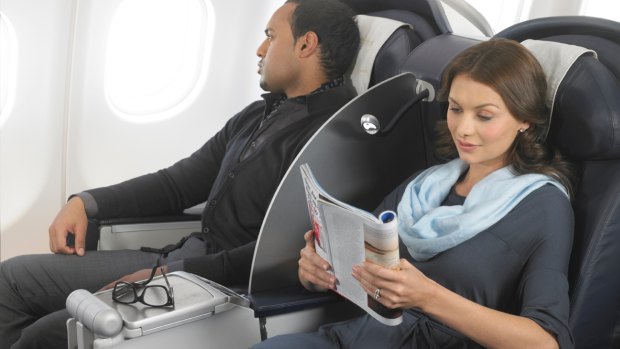
South Africa's national airline uses a four-engine A340-600 to operate flights to Australia, and configuration in business class is an old-school 2-2-2 arrangement.
Qantas
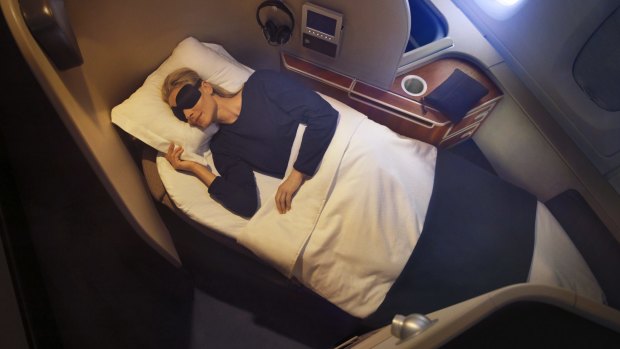
Qantas still offers a first-class cabin on its A380 aircraft, with seats in a 1-1-1 arrangement known as "open suites", ie no sliding door. Business class on the same aircraft comes in two different layouts, either 1-2-1 or 2-2-2, with a slightly narrower seat in this second layout. Aboard Qantas's 787-9 Dreamliners, business class is a 1-2-1 forward-facing configuration and the same on the carrier's A330-300s.
Qatar Airways
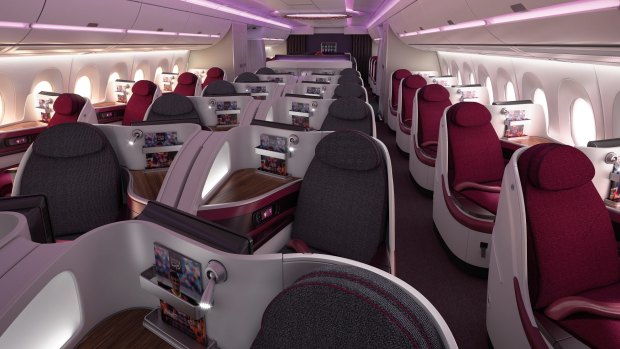
For its flights to Melbourne and Sydney the airline is currently using A350-1000 aircraft, the largest of the A350s, with Qatar as the launch customer for this particular type. Configuration in business is 1-2-1, all closed suites with forward-facing seats. Seats are staggered with alternate rows facing forward/aft. In the centre of the cabin, four middle seats can create a quad cabin with seats facing inwards.
United Airlines
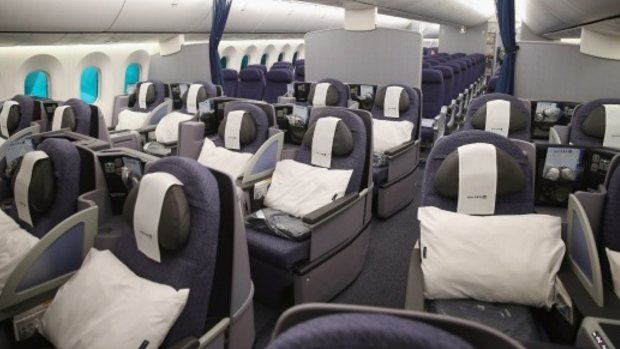
Business class seats on United's Boeing 787-9 Dreamliner are either a 2-2-2 or a 1-2-1 configuration. Window seats in cabins with the 1-2-1 layout are either forward facing or angled inwards. Premium Plus is a 2-3-2 configuration, the same as in economy, but with 7.5cm greater seat pitch.
Virgin Australia
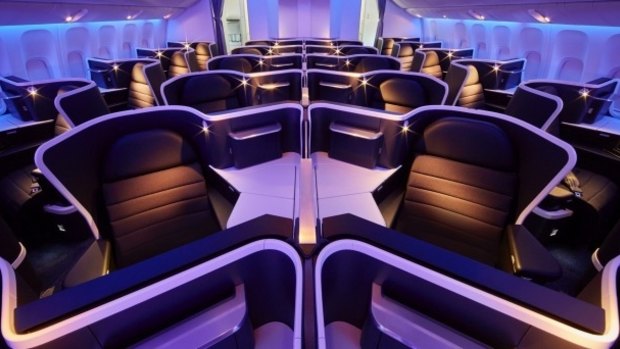
Virgin is operating flights to the US using a Boeing 777-300ER with a 1-2-1 reverse-herringbone configuration for its business class flyers.
See also: The one big issue that will stop Australians travelling overseas
See also: The 11 destinations Australians should be able to visit in 2021
Sign up for the Traveller newsletter
The latest travel news, tips and inspiration delivered to your inbox. Sign up now.